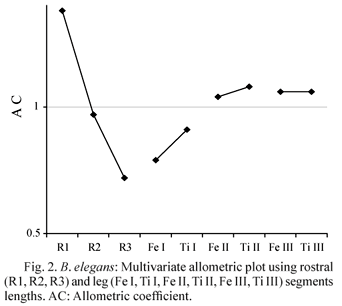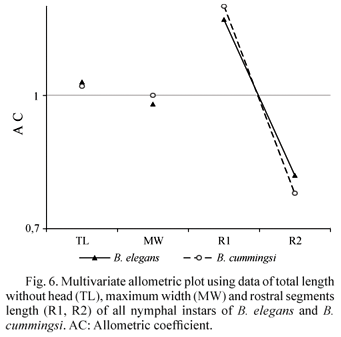The multivariate allometric growth patterns from longitudinal data of leg and rostral segments of all instars of Belostoma elegans (Mayr) and B. cummingsi De Carlo are presented for the first time, and the allometric coefficients are compared. The segments of the middle and hind legs present allometric coefficients with opposite polarity to those of forelegs. This discrepancy in the ontogenetic trajectories may be due to the different functions of the legs. The foreleg main function is to capture of the prey, while the middle and hind legs are adapted to swimming. The relative size of rostral segments is an important taxonomic character in Belostoma. In B. cummingsi, the proximal segment is longer than the middle one, while in B. elegans they are subequal. Our purpose is to explain these differences through the analysis of their ontogenetic trajectories in an attempt to illuminate the morphological differences among species from a developmental perspective.
Nymph; postembryonic development; water bug; morphometry









